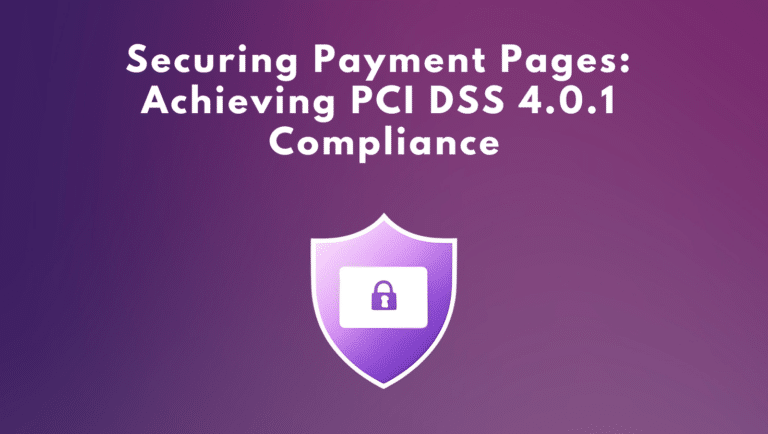Most application security testing focuses on server-side vulnerabilities. While vulnerability management alerts are necessary within today’s threat landscape for increased security, your teams can quickly become overwhelmed by them. These alerts can create a lot of noise for your development teams, other IT staff, and even your business operations.
In order to reduce this noise in your organization, it requires familiarity with how the diverse facets of it may influence it. Your leadership and teams know the importance of monitoring these exploits and the need to protect against them. However, many leaders often wonder at what cost or resources you can condense to reduce the noise from them. We’ll cover how to use client-side security to minimize noise for your team.

Vulnerabilities Everywhere
It is commonly known that vulnerabilities are often a regular part of today’s digital threat landscape. It seems like every day there are new exploits that have been released. Your security team knows that application security primarily focuses on identifying and mitigating vulnerabilities within applications. However, what many leaders may not often realize is the amount of noise that this can create for both the security and development teams.
Your team could spend all day on the National Vulnerability Database (NVD) attempting to research and mitigate the exploits that are published. While understanding what vulnerabilities can impact your business assets and could disrupt operations is necessary, teams can easily become overwhelmed just trying to keep up with all these vulnerabilities. Ultimately, always focusing primarily on all of the vulnerabilities your organization faces creates too much noise and possible redundancy for your dev team. In turn, this can cause them to tune out your application security alerts.
Once your dev team has ignored these alerts from your application security, it hinders the progress that has been or will be made against combating these exploits. If progress is not made to mitigate critical exploits because the dev team has ignored the alerts, then AppSec will also then tune out or possibly mute the notifications themselves to remove the excess noise they create. From there, you can envision the domino effect that happens when critical security notifications are ignored.
The False Positive Nightmare
Let’s envision for a moment a more cohesive narrative between your dev and appsec teams. For illustration, let’s say that your appsec and dev team work and collaborate together continually. The vulnerability alerts that come from the appsec team are submitted to the dev team, where action is taken swiftly to mitigate these things.
If you agree that this narrative flows better than the previous section, where vulnerabilities are at least addressed, then you are seeing two teams that work together successfully. So how does this happen where both teams work together successfully without so much noise from all the vulnerabilities? You have your appsec team focus on reducing the redundancy and false positives.
From there, the appsec team weeds out false positives for the dev team. However, there are issues with this security posture as well. Your appsec teams need to review why these false positives are happening and what to do about them. When organizations opt to automate vulnerability scanning tools, more false positives can happen. This is often common with these tools because they do not have the ability to add context during the scan. Instead, they focus on exploit alerts for your appsec team.
To some IT leaders, this sounds like a dream of two teams working together successfully to mitigate vulnerabilities. However, sometimes the dream can quickly turn into a nightmare quickly. Suppose you automate the application security process by scanning for vulnerabilities to create less noise for your dev. In that case, your appsec team still has to go back and weed out false positives. It poses the question of how much is the automated process truly helping the appsec or if it is still hindering things for both of your teams.
A New Generation of Client-Side Vulnerabilities
The new generation of client-side vulnerabilities are different from their predecessors. They happen quietly within the browser, many times without a trace of logs or events. Ultimately, your appsec team needs to be aware of today’s more diverse types of client-side vulnerabilities to reduce the noise created by them. Considering that today’s client-side vulnerabilities are not based solely on code, it’s important for your team to understand these are broken down into these four different categories:
- Code vulnerabilities – these are often equivalent to back-end vulnerabilities. However, they are also prone to false positives from scanning tools. This means that if your team is looking for code vulnerabilities within your applications, you will need to make sure that your tool is up to date.
They will also need to ensure it is trained on the latest versions of the most frequently used languages to ensure better accuracy of the scan conducted. Otherwise, your team will be faced with a wave of mitigating redundancies versus addressing actual vulnerabilities.
- Data access vulnerabilities – most of these types of vulnerabilities include both first-party and third-party code that can access data inputs. For example, your organization may utilize a web form or a mobile application to require users to input data directly into your system from your website or mobile app. The data is then accessed by first-party code in the form of your server-side code.
In a third-party code data input, your team can access user behavior through tracking scripts. The problem with these types of vulnerabilities is that it opens the opportunity for these processes to be exploited from the client-side. While that is something beyond your control, this data access often happens in real-time and does not provide false positives to your team.
- Data exfiltration vulnerabilities – Data exfiltration vulnerabilities are similar to data access vulnerabilities in that they both involve unauthorized access to sensitive data. The key difference is that data exfiltration refers to the unauthorized transfer of data out of an organization’s network to an endpoint outside of its control.
This can occur in various ways, such as through email attachments, removal media, or cloud storage solutions. These vulnerabilities can often be challenging for your team to manage unless you have actions in place to alert your appsec team. This is due in part because once the transferring of data beyond your organization’s server and network has occurred, you have no further control of it. - Privacy violations – although privacy violations are not a defined vulnerability, they increase your organizational liability. Nowadays, tracking cookies and other website user or visitor information that is input from the client-side can create a new level of vulnerabilities for your organization. Malicious actors can use measures such as cross-site scripting that can steal client-side information without even infiltrating your server-side. These threats can still make your organization accountable in the event of a data breach. Therefore, your teams need to ensure the tools they use are also covering your client-side vulnerabilities as much as your server-side vulnerabilities.
Create Less Noise with Real-Time Results
Today’s threat landscape goes beyond just the server-side vulnerabilities within your organization. Your client-side vulnerabilities can be equally as damaging to your business assets. It requires your team to take these threats more seriously because of the damage they can present to your company. Client-side risks are different because of how they are detected nowadays.
For instance, these new generations of client-side vulnerabilities that you may face. If you focus primarily on the code and back-end vulnerabilities, you can create more noise with false positives. In order to mitigate this, your appsec team needs to ensure they are keeping systems updates regularly to avoid unnecessary alerts. Additionally, if the focus is on your defensive controls in place, this might return a false positive as well, likely on purpose, in order to thwart an attacker.
On the client-side, when your pages are rendered in real-time, this makes the chance for false positives is minimal. When it comes to client-side vulnerabilities, they should be handled with greater importance, given they have a significantly lower chance of being reported as false positives. This subsequently can help your appsec teams run more efficiently with less noise and mitigate the critical threats to your organization. It will also increase your overall security posture for the better so your teams can focus on critical alerts more appropriately.
Feroot can help you secure your client-side vulnerabilities more easily and reduce the noise amongst your appsec and dev teams. By securing web applications and webpages with automated security scanning, monitoring, and controls, this will protect your consumer data more successfully. Contact us today to schedule a demo to see how you can become more secure with your client-side vulnerabilities.


